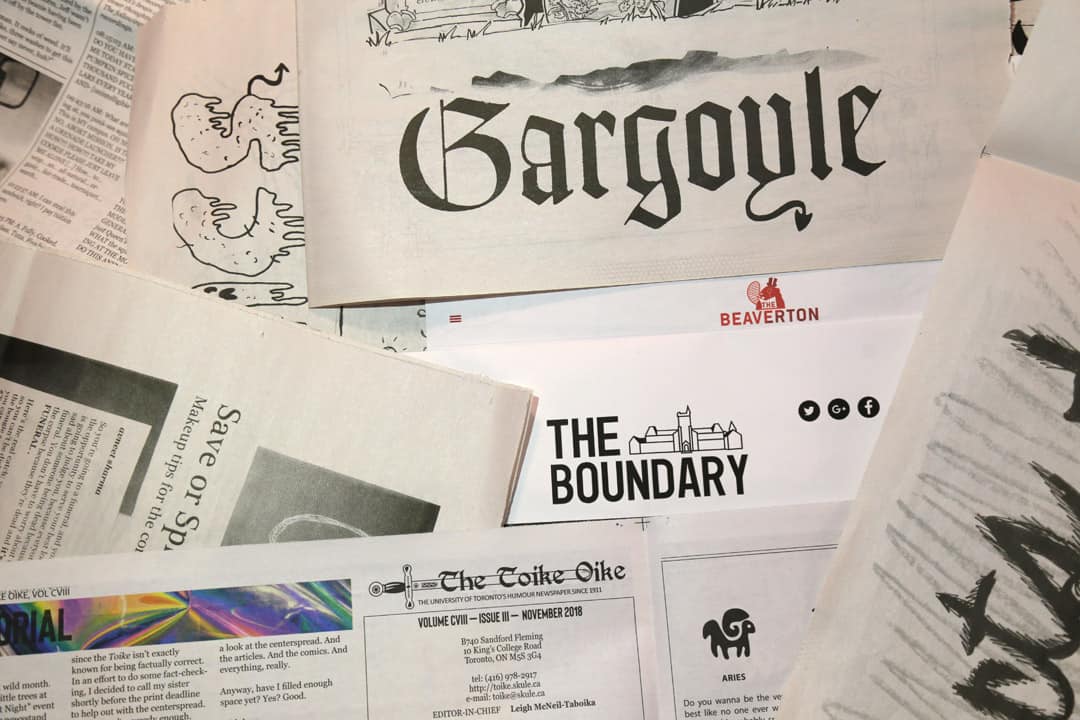Whether it’s The Onion in the US or The Beaverton in Canada, it seems that there is nowhere you can turn in the online world without encountering satirical news.
But this uptick is certainly no accident, and likely reflects a worrisome political reality. According to Pennsylvania State University professor Sophia McClennen, “We see satire emerge when political discourse is in crisis and when it becomes important to use satirical comedy to put political pressure on misinformation.”
While journalistic impartiality is critical for conventional news outlets, satirical journalism directly challenges questionable beliefs and actions. It manages to breach subjects seen as too taboo for traditional reporting with an exceptionally low tolerance for nonsense.
This is especially pertinent as it can be difficult for traditional news media to keep up with the outlandish controversies in current politics. Regarding coverage of Donald Trump, McClennen said, “the news media sort of seems like it has to take [Trump’s statements] seriously in order to be taken seriously.”
Satire can tackle these issues head-on. For example, when Doug Ford announced his hastily revised sex-ed curriculum, traditional networks covered the controversy with a neutral gaze. The Beaverton, by contrast, published an article entitled, “Doug Ford replaces sex-ed curriculum with old copy of Playboy found in woods” — lampooning the outdated and careless nature of the decision.
Less restricted by journalistic guidelines, satire generates interest, debate, and conversation in a way that encourages a more critical view. It stops the normalization of politics which are abnormal, and, when done well, can be as informative as traditional news.
There is, however, an ugly underbelly to satire. With politics entering what many are calling a ‘post-truth’ era, it is vital to recognize fake news. Toeing the line between satire and fake news can be difficult, and is rooted in intent. Fake news presents false stories to intentionally deceive its audience, while satirical news publishes them with the intent of poking fun at current events.
To avoid falling into the category of fake news, some satirical outlets are making the nature of their content obvious. This proves to be a serious hurdle for many publications, for which an authentic appearance as a news outlet is part of the satire. Having a giant, flashing “satire” sign behind articles, on the other hand, can detract from the humour.
Satire at U of T has a long history. Engineering’s Toike Oike bills itself as “The University of Toronto’s Humour Newspaper since 1911,” while University College’s The Gargoyle has been in print since 1954.
Recently, two online-only publications, The Boundary of Victoria College and the The Highland Holler at UTSC have established footholds in the U of T publications community. The Boundary‘s Editor-in-Chief Ted Fraser attributes this growing interest in satire to the fact that “Facebook has come back from the dead… [it] is conducive to the type of Headline Humour we churn out.”
The Highland Holler suggested that there is an untapped, somewhat frustrated market for satire at U of T, seeing their fair share of complaints about the university and organizations within it. Delayed Arts & Science exam schedules, insects found in food at UTSC, unexpected enrollment increases at UTM, and $30 writing surfaces offered at the Daniels lecture hall reflect problematic oversights by various administrations at U of T. It is therefore no wonder that students are seeking direct, humorous criticism.
Both publications consider satirical news to be highly relevant. The Boundary sees campus satire as a counterweight to traditional news: “The Varsity is like your T.A. — reliable, astute, serious — and The Boundary is like your tutorial buddy,” said Fraser. While The Boundary recognizes satire to generally be “incredibly important as a political tool,” said Head Content Editor Kyle Brickman, the publication tries to steer clear of anything too political as it relates to campus.
The Highland Holler, meanwhile, holds no such reservations. While satire, especially in student journalism, is a tool that is meant for entertainment, the Holler explains that it is also intended to “encourage people to engage in civil discourse. The aim is to have people learning more about the topic at hand, as well as themselves, and their role as a student.”
The Highland Holler has run into some trouble with fake news, though. “One of the biggest issues that we’ve had to deal with is people taking our articles seriously and reacting to them candidly as though it were real news,” they said.
On the other hand, The Boundary sees satire as a reliable source of news. “We’re consistently fake. Because we’re in the Post-Truth Era, actual news is cloaked in ambiguity — you have to be skeptical of headlines, fact-check stories, maybe vet authors for hidden agendas. Our fake news is… a respite from second-guessing,” said Fraser.
It can be a struggle for students to keep up with the news. Outrage fatigue is real, and many people cope by simply disconnecting from the news. Satire offers an enticing alternative. By juggling between light-hearted humor and probing criticism, students can choose where and how to engage with journalism.
Often, students don’t have the time to read through a lengthy Varsity feature. They might just prefer to get a chuckle out of a Boundary headline reading, “Caffiends to Just Start Pouring Coffee Down Customers’ Throats.”
If done well, satire can entertain, inform, and enrage all at once. If publications manage to toe the line between fake news and satire, it can be an incredibly successful form of news. Failing that, it’s still funny, and mockery never gets old.
Ori Gilboa is a first-year Humanities student at Victoria College.


